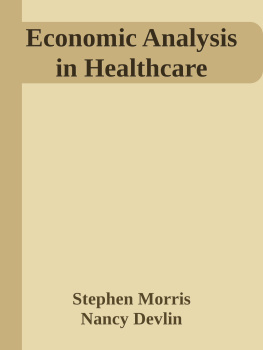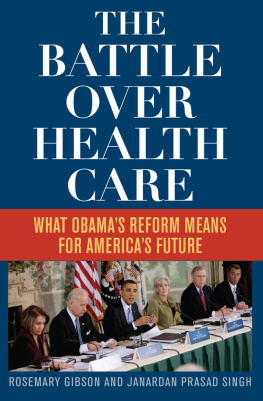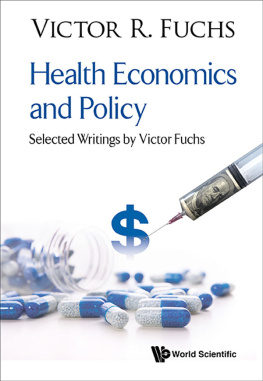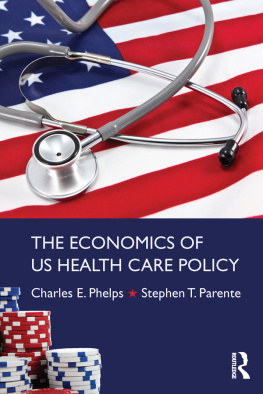Contents
This edition first published 2012
2012 John Wiley & Sons, Ltd
Registered office
John Wiley & Sons Ltd, The Atrium, Southern Gate, Chichester, West Sussex, PO19 8SQ, United Kingdom
For details of our global editorial offices, for customer services and for information about how to apply for permission to reuse the copyright material in this book please see our website at www.wiley.com .
The right of Stephen Morris, Nancy Devlin, David Parkin and Anne Spencer to be identified as the authors of this work has been asserted in accordance with the Copyright, Designs and Patents Act 1988.
All rights reserved. No part of this publication may be reproduced, stored in a retrieval system, or transmitted, in any form or by any means, electronic, mechanical, photocopying, recording or otherwise, except as permitted by the UK Copyright, Designs and Patents Act 1988, without the prior permission of the publisher.
Wiley publishes in a variety of print and electronic formats and by print-on-demand. Some material included with standard print versions of this book may not be included in e-books or in print-on-demand. If this book refers to media such as a CD or DVD that is not included in the version you purchased, you may download this material at http://booksupport.wiley.com . For more information about Wiley products, visit www.wiley.com .
Designations used by companies to distinguish their products are often claimed as trademarks. All brand names and product names used in this book are trade names, service marks, trademarks or registered trademarks of their respective owners. The publisher is not associated with any product or vendor mentioned in this book. This publication is designed to provide accurate and authoritative information in regard to the subject matter covered. It is sold on the understanding that the publisher is not engaged in rendering professional services. If professional advice or other expert assistance is required, the services of a competent professional should be sought.
Library of Congress Cataloging-in-Publication Data
Economic analysis in health care / Stephen Morris... [et al.].2nd ed.
p. ; cm.
Rev. ed. of: Economic analysis in health care / Stephen Morris, Nancy Devlin, David Parkin. c2007.
Includes bibliographical references and index.
ISBN 978-1-119-95149-0 (paper : alk. paper)
I. Morris, S. (Stephen), 1971- II. Morris, S. (Stephen), 1971- Economic analysis in health care.
[DNLM: 1. Delivery of Health Careeconomics. 2. Costs and Cost Analysis. W 84.1]
338.4'1;73621dc23
2012002906
A catalogue record for this book is available from the British Library.
This book is for our lovely children:
from Steve to Eve and Stella;
from Nancy to Sophie, Molly and Hugh;
from Dave to Susannah, Eleanor, Laura and Stephen;
from Anne to Adam and Zo
Preface
Each of us has, for many years, taught health economics courses to both masters and undergraduate students in the UK (and, in Nancy's case, New Zealand) and our objective here was to write the sort of book we always wished was available for our students.
As health economics has grown as a subdiscipline, so too have the number of textbooks that are available. The many fine textbooks from the USA in this subject are inevitably influenced by the particular system for funding and provision of health care in that country; the focus of these is not always appropriate for the principal concerns and issues in other health care systems. And while there are textbooks on health economics in the UK, for example, these generally either aim to provide an easy-to-understand, non-technical introduction to health economics for those with no economics background, or focus on one particular aspect of health economics, such as economic evaluation or health care financing. While some of these books are excellent, their objectives limit their usefulness as a teaching tool for a more general course in health economics.
This book is written to provide (we hope!) a useful balance of theoretical treatment, description of empirical analyses and breadth of content for use in undergraduate modules in health economics for economics students, and for students taking a health economics module as part of their postgraduate training. Although we are writing from a UK perspective, we have attempted to make the book as relevant internationally as possible by drawing on examples, case studies and boxed highlights, not just from the UK, but from a wide range of countries including Australia, Canada, Finland, Iran, Ireland, Italy, Namibia, New Zealand, Norway, Sweden, Tanzania, Thailand, USA and the Vietnam, plus multinational sources including the OECD, the WHO and the World Bank.
There are other things about this book that we hope will be of particular value to students. First, we have paid special attention to explaining key elements of theory in health economics for example, the contributions of Arrow (1963) and a full account of the Grossman (1972) model, both of which we view as critical to any account of health economics. We have not shied away from presenting and explaining the technical aspects of the theory, but have endeavoured to do so in as user-friendly a manner as possible. Secondly, we have been careful to link the practice of economic evaluation to underlying concepts in production, costs and efficiency. This reflects our own view that, as the practice of economic evaluation has come to be dominated by increasingly sophisticated statistical and modelling techniques, the underlying economics concepts (and, incidentally, a remaining rich research territory) are sometimes overlooked.
We very much hope that this book will serve to provoke thought and stimulate a deep interest in health economics, in the same way as earlier writers, particularly Alan Williams, Victor Fuchs and Tony Culyer, served to inspire us in our careers.
In this edition we have incorporated helpful suggestions made to us by readers of the first edition. We have also added a new chapter on the economics of health care labour markets, justified by the size of this sector and its importance to health care production. We have updated the boxed examples and case studies, and also used more of these, and from a wider range of countries.
As well as revising the book, we have improved the companion website. We have added to the depth and breadth of material available. It contains a wide range of complementary teaching and learning resources, such as practical exercises, animated slides, and study questions, including a new series of more technical questions that will be of particular interest to economics students.
Lastly, we would like to say thank you to a number of people who have helped us: Steve Hardman, Jennifer Edgecombe and Nicole Burnett from our publishers, John Wiley & Sons, for their careful advice and understanding; several anonymous reviewers for their constructive criticism; Laura Vallejo-Torres for her comments on Chapter 7; Augustin de Coulon for his input into Chapter 8; Stephen Pollock for his help with notation; and Aki Tsuchiya for her extensive and invaluable feedback. To these people as well as the many readers who contacted us with comments about the first edition, thank you for your helpful advice and kind words.
Stephen Morris, Nancy Devlin, David Parkin, Anne Spencer
Chapter 1
Introduction to Economic Analysis in Health Care
1.1 Life, Death and Big Business: Why Health Economics is Important









